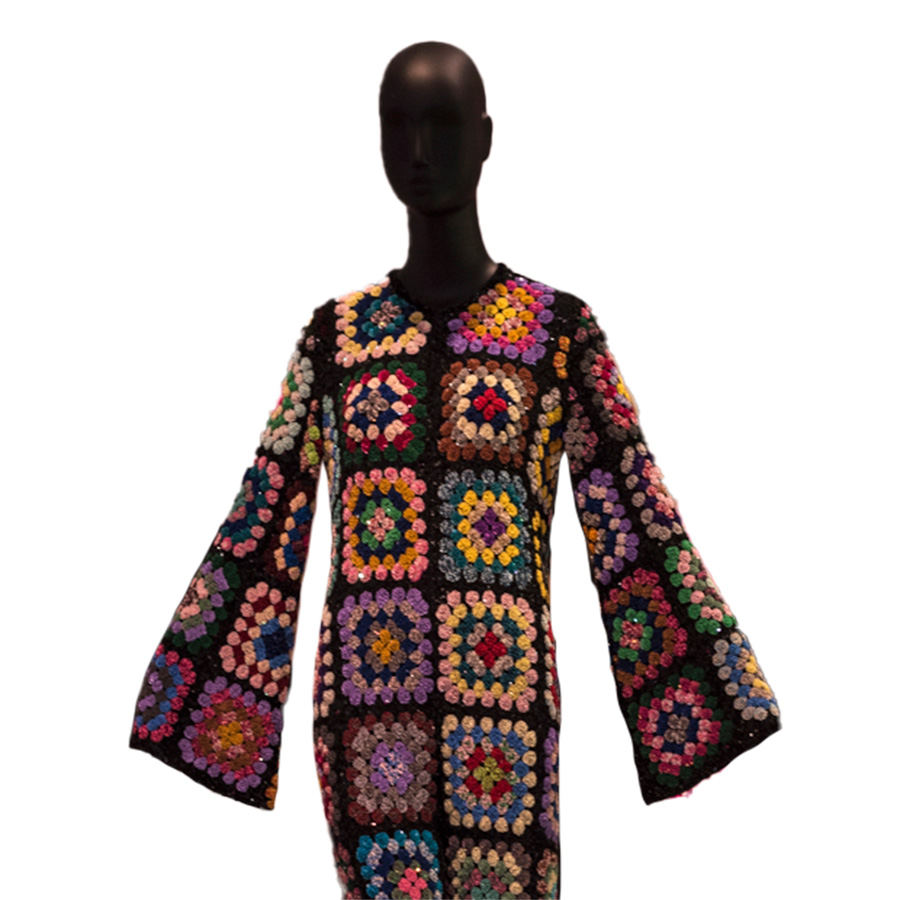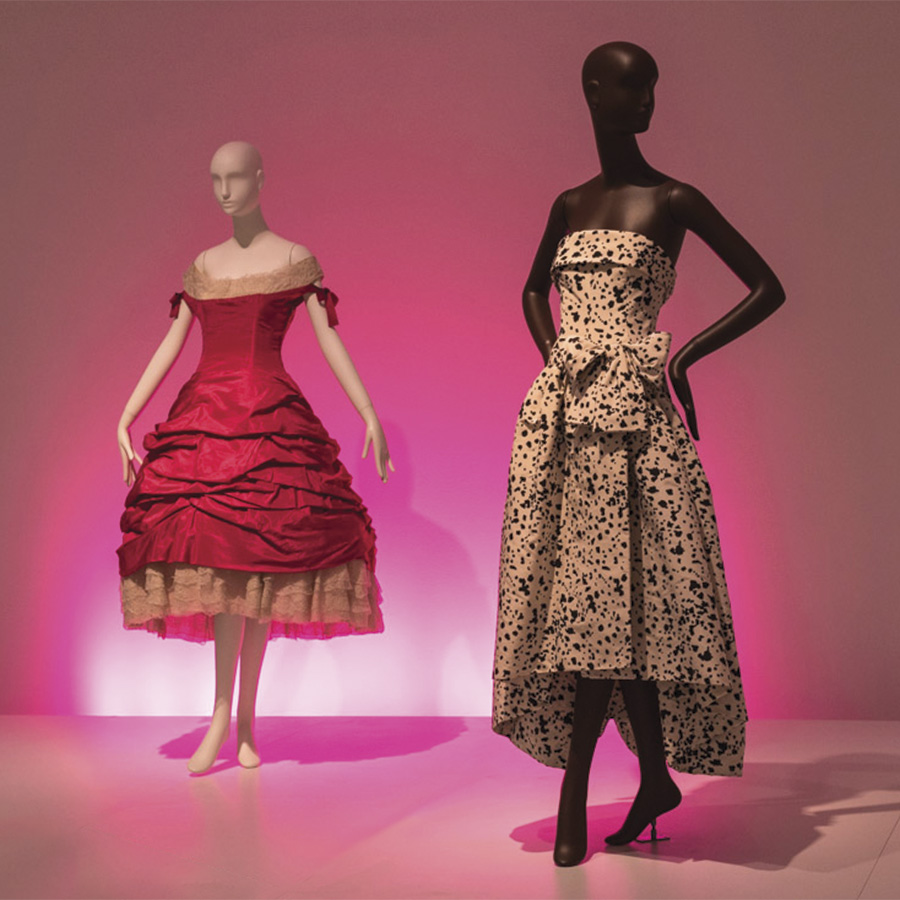Inspired Delight
The Texas Fashion Collection's newest exhibition shows off exquisite details.
April 8, 2022
T
he dress looks like a quilt many people could find draped across their grandmother's sofa. Until you look a little closer.

Designer Ashish Gupta, working under the ASHISH brand, created this hand-crocheted
outfit inspired by his grandmother's quilt.
"That piece is nothing but sequins," says Annette Becker ('15 M.A.), director of UNT's Texas Fashion Collection.
The gown, created by Indian-born, London-based designer Ashish Gupta, working under the brand ASHISH, is composed of a lightweight, almost sheer, black fabric. And it's one of more than 35 garments and accessories on display at the exhibition, Delight: Selections from the Texas Fashion Collection, running through May 21 in the College of Visual Arts and Design Gallery in the UNT Art Building.
As the title suggests, the clothes are designed to evoke pleasure in viewers when they see them first hand.
"You can't understand the depth of that beauty and craftsmanship unless you're in person," says Becker, who curated the show.
All of the items were drawn from the nearly 20,000- piece permanent collection to reflect its history.
"We wanted to make sure fashion's past is in conversation in the present," Becker says.

A dress by Michael Faircloth ('83) is highlighted by a gold silk fabric and an embroidered
bodice.
Pieces include a black Vera Wang dress that originally was white when it went down the runway but later translated to black to be more wearable for formal events. A gold dress with intricate embroidery on the bodice by Michael Faircloth ('83) shows the Texas designer's caliber of haute couture. Cristóbal Balenciaga's confection of a dress features a voluminous skirt -- made with real hoops -- and an exuberant pink color.
Becker says the fashion artifacts often feature unexpected details that turn unassuming pieces into works of art.
One Patrick Kelly outfit inspired the whole exhibition. At first glance, it looks like a typical skirt suit. But as visitors look closer, they'll see the buttons are made of dice and the pockets seem randomly placed, including in the back of the suit -- perhaps a reference to luck, as this collection was inspired in part by Las Vegas.

Cristóbal Balenciaga's pink evening gown, nicknamed the "cupcake dress," stands next
to a black-and-white printed silk faille dress with a dalmatian print against a white
background, designed by Hubert de Givenchy, who studied under Balenciaga.
The exhibition's title was inspired by The New York Times best-selling collection of essays The Book of Delights by Ross Gay, and is meant to encourage visitors to think more about each artifact and celebrate the distinctive story it holds.
"Clothes exist in our everyday lives," Becker says. "But if we train ourselves to see delight in the details around us, it opens us to see the world in new and exciting ways."